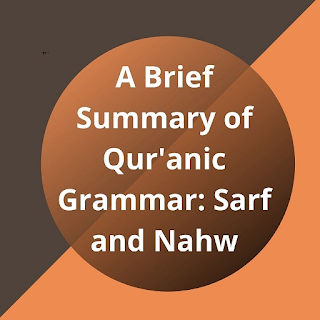Introduction In the name of Allah, the Most Beneficent and Merciful, and peace and blessings be upon His noble messenger Mohammed S allallahu alaihi wa Sallam. This book briefly covers the basics of Qur’anic Grammar. It covers the basics of nouns, verbs, and particles. It goes into details of conjunction (additive) Waaw, faa, and other particles, rules, and unique features for sentences, verbs, and preposition combinations. I have also added Top 300 nouns and verbs and most used particles along with analysis of two ayahs of Surah An’aam with Sarf analysis and Nahw charts to show how it is approached.










